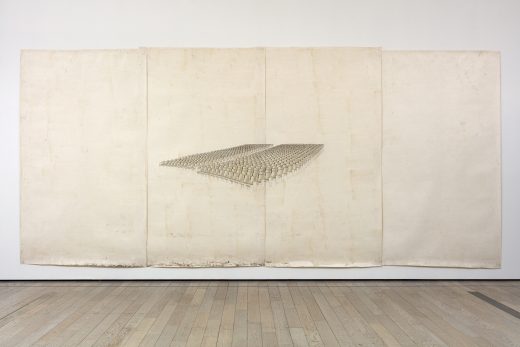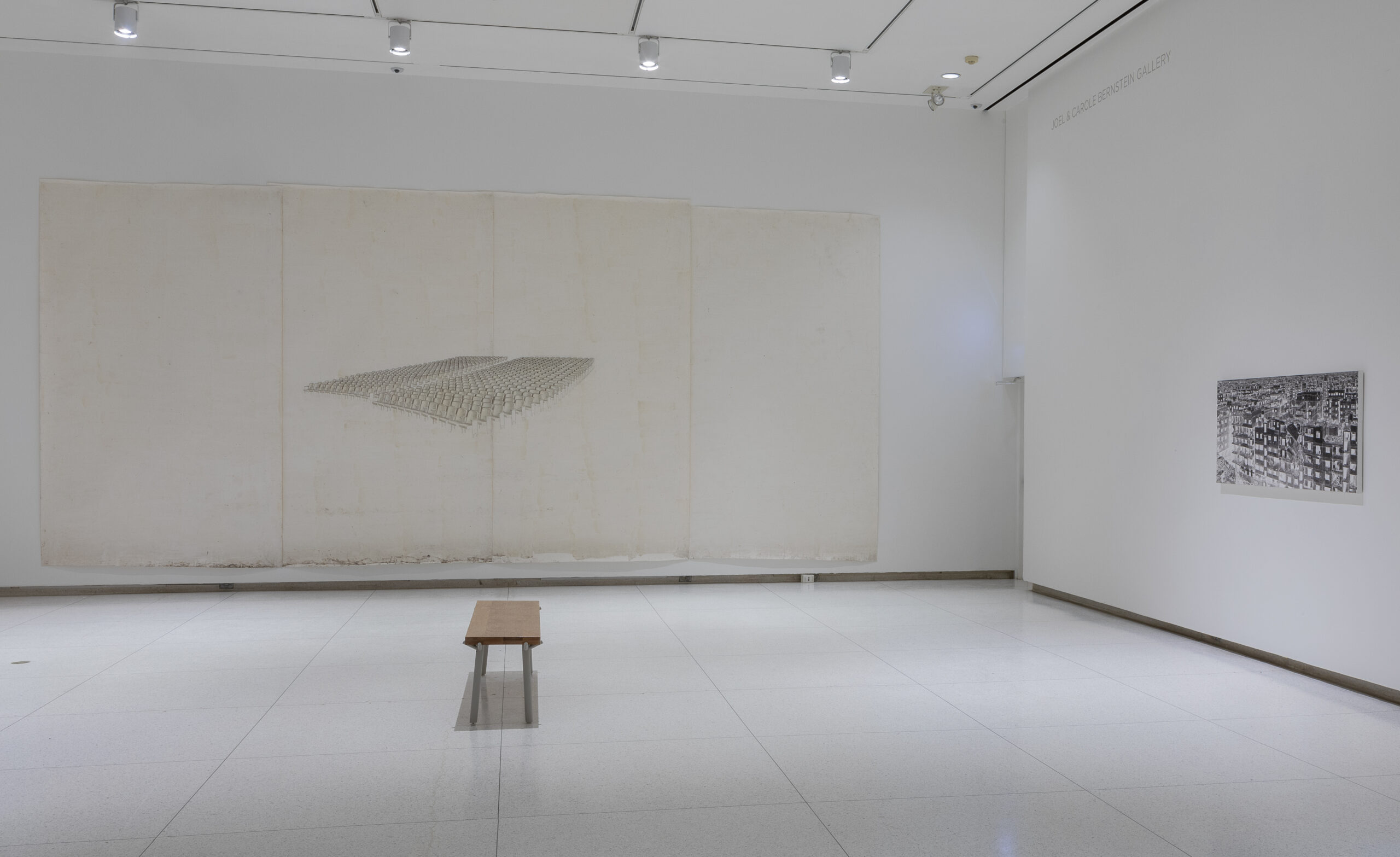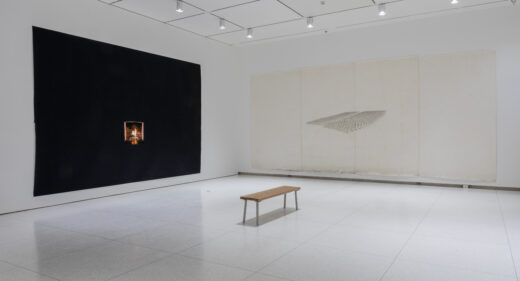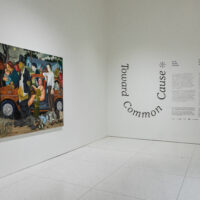Toba Khedoori

The spare world of Toba Khedoori’s paintings is populated by familiar objects that structure the world that we inhabit. Doors, hallways, windows, rows of seats, a chain-link fence—her repertoire evinces a particular affinity for elements of built environment that mediate both access and exclusion. Treated with Khedoori’s singular combination of intricate detail and resolute abstraction, these objects typically appear shorn of any context and devoid of human figures, at once familiar and anonymous, reticent and inviting. In this way, Khedoori’s paintings initiate a subtle play between recognition and estrangement, prompting us to continually question our relationship to both her work and the elements that make up our common world.
Born in Australia to Jewish-Iraqi parents, the LA-based artist became known in the 1990s for the meticulous draftsmanship of her large-scale paintings on waxed paper, which featured perspectival renderings of architectural fragments hovering amidst vast swathes of negative space, at times measuring as much as 10 x 20 ft. To create these intricate works, Khedoori would begin by coating large sheets of paper, laid out across her studio floor, in wax. The sheets would then be scraped smooth, at which point the artist would set to work translating detailed, full-scale drawings into paint, a labor-intensive process requiring patience, a keen eye, and a practiced hand.
Characteristic of work from this period is Untitled (seats) (1996), which presents row upon row of empty seats surrounded by a wide expanse of undefined space, large enough to overwhelm the viewer. The effect of the combination is somewhat disquieting; the empty auditorium appears almost inviting, yet remains somehow insubstantial, as though precluding even the possibility of occupation. But if human presence has been evacuated from the space of representation, it paradoxically reemerges on its surface. Subtly luminous, the vast expanses of Khedoori’s waxed paper reveal, on closer inspection, a host of small marks—dust, stains, traces of brushstrokes, and other bits of debris—which prompt us to consider the artist at work. If the auditorium might be taken as one of the 20th century’s most paradigmatic forms of the commons, the materiality of Khedoori’s work suggests the possibility of another, gesturing out towards the space of the gallery to place artist and viewers in intimate relation.
Since 2008, Khedoori has begun to work on a slightly more modest scale, bringing her rigorous draftsmanship to the medium of oil on canvas. Though retaining the artist’s characteristic precision, restraint, and fondness for empty spaces and inversions, these later works also evince a new interest in compositions with an all-over effect, in which positive and negative space are intricately woven together. Khedoori’s repertoire of themes has also expanded. A number see the artist turn her eye to elements of the natural world (branches, rivers, mountain ranges, clouds), while others show her confronting the political crises of the present. Untitled (2020) takes as its subject the war-scarred facades on the outskirts of Damascus. Here, the emptiness that has long preoccupied Khedoori acquires a darker note, pointing to the fragility of the built environment that is required to sustain human life.


